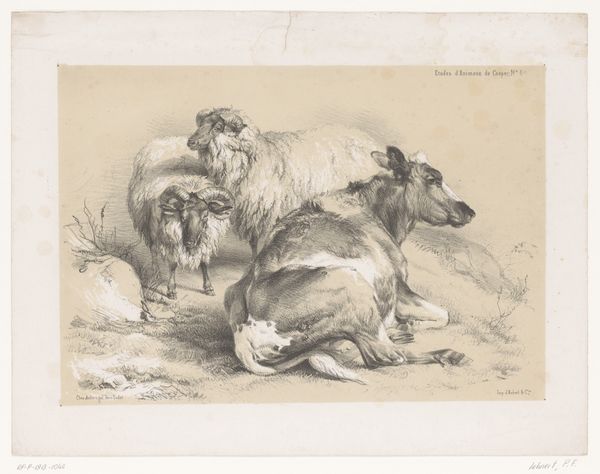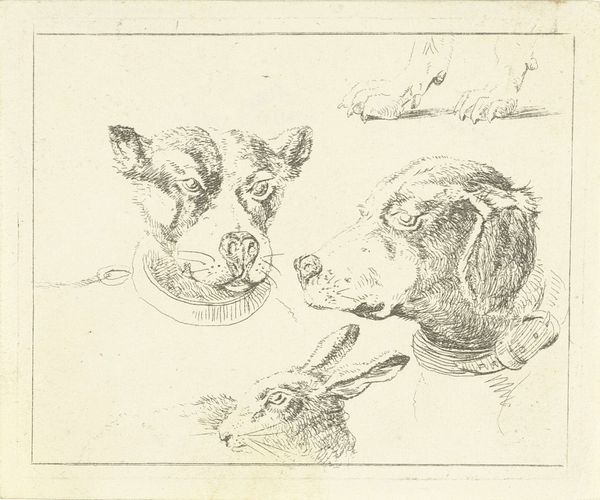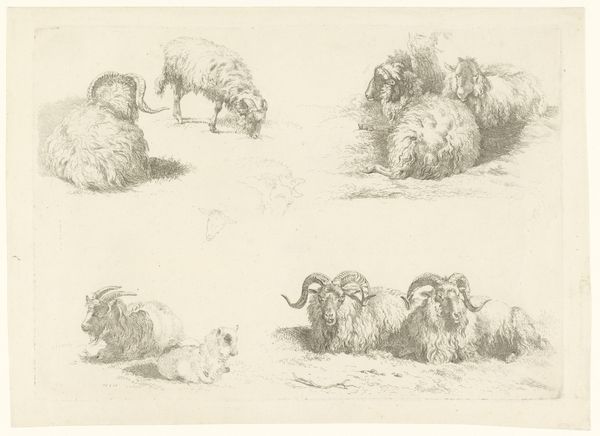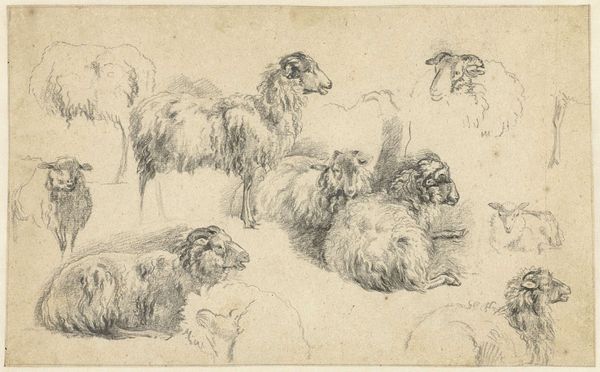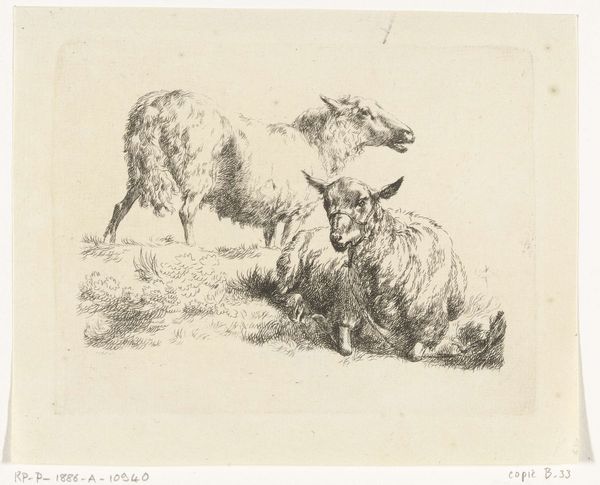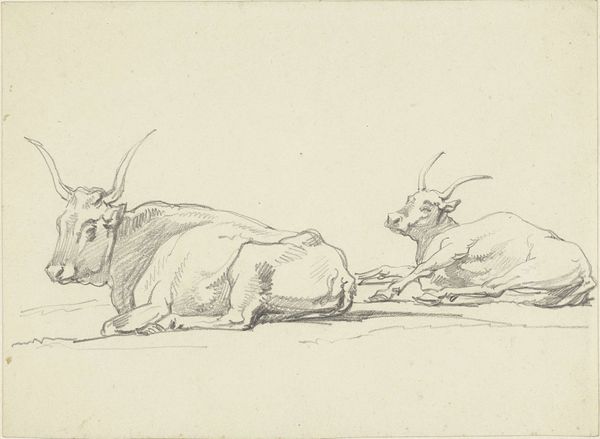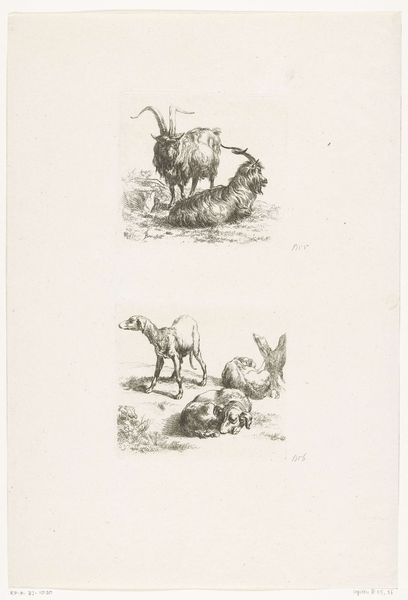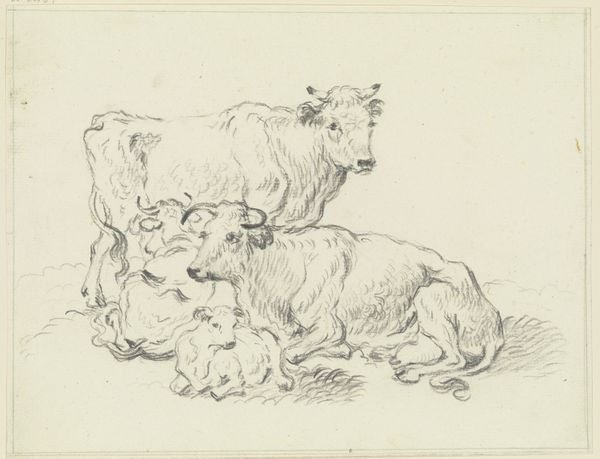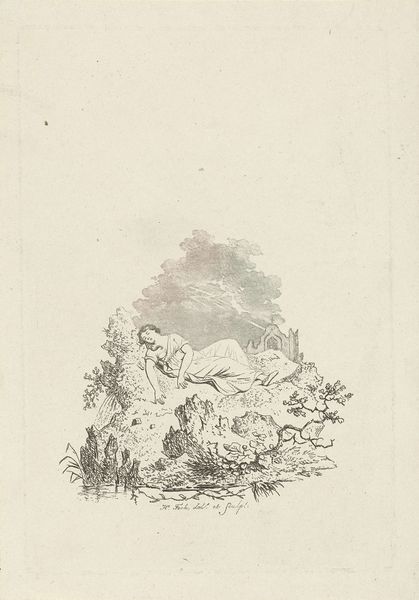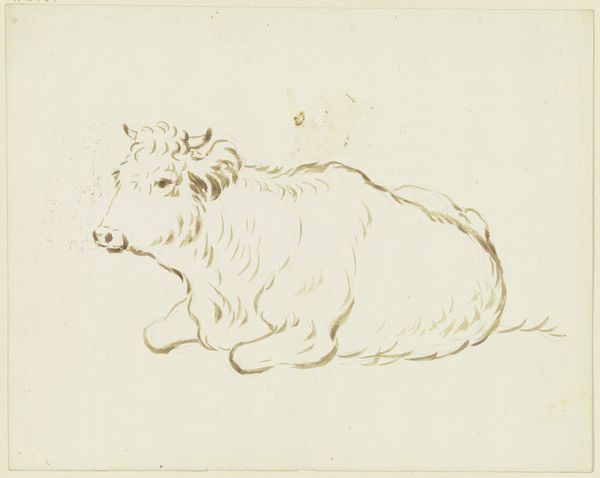
drawing, dry-media, pencil
#
pencil drawn
#
drawing
#
pencil sketch
#
landscape
#
charcoal drawing
#
form
#
dry-media
#
pencil drawing
#
pencil
#
realism
Dimensions: height 270 mm, width 385 mm
Copyright: Rijks Museum: Open Domain
Joannes Bemme created these 'Studies of a Ram' with pen in the early 19th century. This was a period when art academies across Europe emphasized rigorous observation and precise rendering of the natural world. Bemme's drawing reflects the prevailing Neoclassical aesthetic, which valued clarity, order, and a scientific approach to understanding nature. In the Netherlands, this artistic trend aligned with the country's economic interests, particularly in agriculture and animal husbandry. Images of livestock served not only as artistic exercises but also as a form of documentation and promotion of Dutch breeds. These drawings were often commissioned by wealthy landowners or agricultural societies who sought to improve breeding practices. The careful attention to detail and anatomical accuracy in Bemme's work speaks to the functional role of art in supporting the burgeoning agricultural industry of the time. By examining archival records, agricultural journals, and institutional histories, we can gain a deeper understanding of the social and economic context in which this seemingly simple drawing was created, revealing the intricate connections between art, science, and society.
Comments
No comments
Be the first to comment and join the conversation on the ultimate creative platform.

